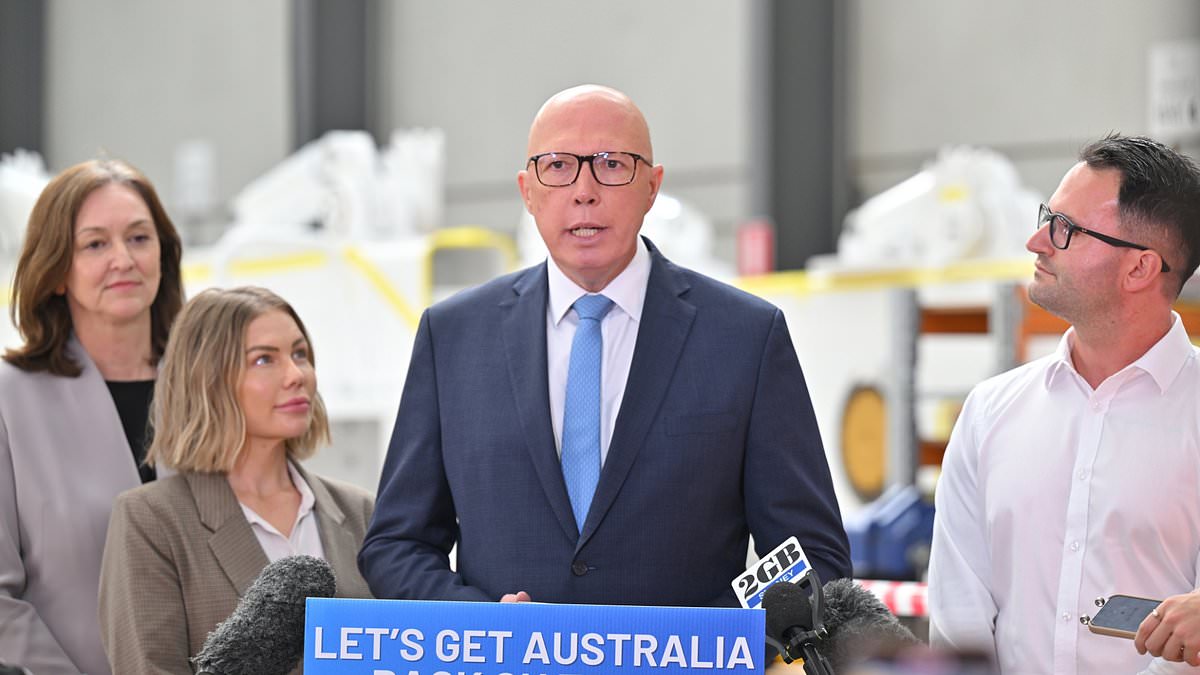Peter Dutton is campaigning to relax home lending rules hoping this will make it easier for younger ns to get their first property as house prices soar in affordable postcodes.
Typical house prices in every state capital city have now risen beyond the reach of even those on a low six-figure salary wanting to buy on their own.
Property values are also soaring by double-digit figures annually in more affordable, outer suburbs of Brisbane, Adelaide, Perth and regional Queensland where first-home buyers are more likely to have a chance at home ownership.
‘s strict lending rules make it even harder to get a loan, with the banks required to assess a prospective borrower’s ability to cope with a three percentage point increase in variable mortgage rates.
Michael Sukkar, the Coalition’s housing spokesman, said this onerous stress test meant fewer younger home buyers would qualify for a loan, needing help from their parents to buy a property.
‘Right now, ns without access to the “Bank of Mum and Dad” are punished by higher borrowing costs – even when the actual risk is the same or lower,’ he said.
‘That’s a systemic bias in favour of inherited wealth. We will remove it.
‘The Coalition will not accept a situation where a generation of ns do not have the same opportunities for home ownership that previous generations have enjoyed.’
The n Prudential Regulation Authority has, since November 2021, required lenders to model a potential borrower’s ability to cope with a three percentage point increase in variable mortgage rates.
The banking regulator’s stress test was raised from 2.5 percentage points three years ago, back when the Reserve Bank cash rate was at a record-low of 0.1 per cent.
Mr Sukkar said the stricter stress test was stopping younger people from getting a home loan.
‘We will make it clear that APRA must consider the impact of its rules on access to housing – particularly for first-home buyers,’ he said.
‘That means reducing the overly cautious serviceability buffer, which was introduced when rates were near zero but remains unchanged even as the cash rate sits above four per cent.
‘This one-size-fits-all rule is stopping tens of thousands of ns from getting a home loan – even when they can meet the repayments with a prudent margin against unexpected future rates rises.’
RBA mortgage rates rose by 4.25 percentage points in 2022 and 2023, as borrowers copped the most severe rate rise pain since the late 1980s as the Reserve Bank aimed to tame the worst inflation in a generation.
But rates were cut by 25 basis points in February, from 4.35 per cent to 4.1 per cent.
While the Reserve Bank is expected to leave interest rates on hold on Tuesday afternoon, the futures market sees three more rate cuts occurring during the coming year.
The existing stress test means prospective home buyers could miss out on getting a loan and be locked out of the house market as prices kept on increasing in more affordable suburbs.
Median house prices are at record highs in Brisbane, Adelaide and regional Queensland.
In March, they rose in every state and territory capital city except Hobart, CoreLogic data showed.
Sydney’s property prices are only 1.4 per cent below the peak reached in September 2024.
But in more affordable outer suburbs in the city’s south west, house prices are continuing to climb, with Fairfield values soaring by 9.5 per cent during the past year to $1.171million, which is still well below greater Sydney’s mid-point house price of $1.473million.
While Perth prices are marginally below the October peak, it is still ‘s strongest capital city housing market with prices in the Swan area, in the city’s north-east, soaring by 16.8 per cent to $760,261.
Beenleigh, in the Logan area south of Brisbane, saw its mid-point property price surge by 13.8 per cent to $746,844.
An n earning $100,000 is only able to buy a $650,000 property with a 20 per cent mortgage deposit under existing rules, which stop the banks lending borrowers more than 5.2 times their pay before tax.
In Adelaide’s north, Playford property values have soared by an annual pace of 14.6 per cent to $614,868.
But Melbourne still has pockets of affordability, with Broadmeadows in the city’s north having a median price of $584,218 following a more moderate increase of 3.5 per cent.
Brighton, in Hobart’s north, has a mid-point price of $526,670, after prices rose by 3.2 per cent.
In Darwin’s northern suburbs, prices edged up by 4.2 per cent to $508,630.
Townsville in north Queensland was ‘s best performing regional market with prices soaring by 23.5 per cent to $564,865.
